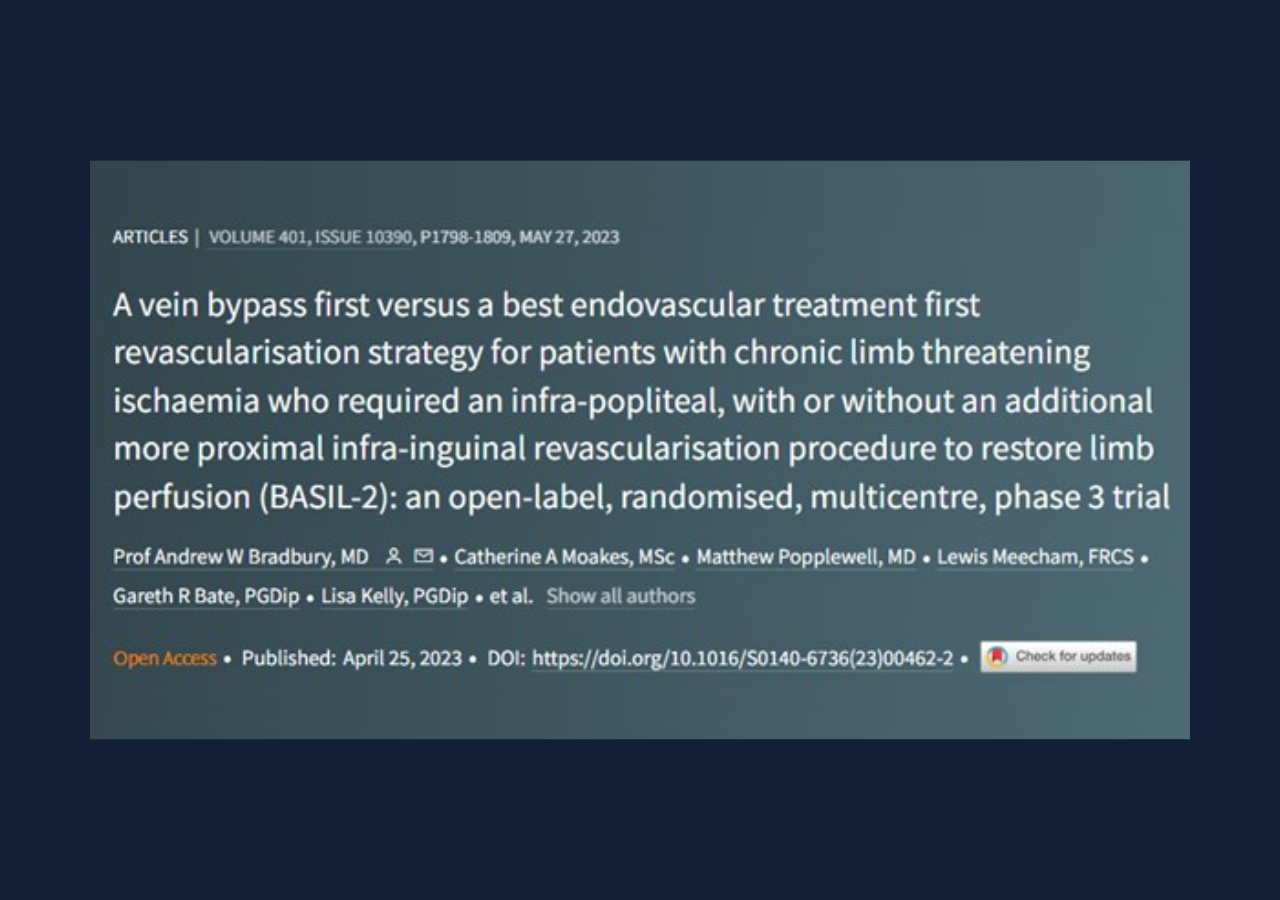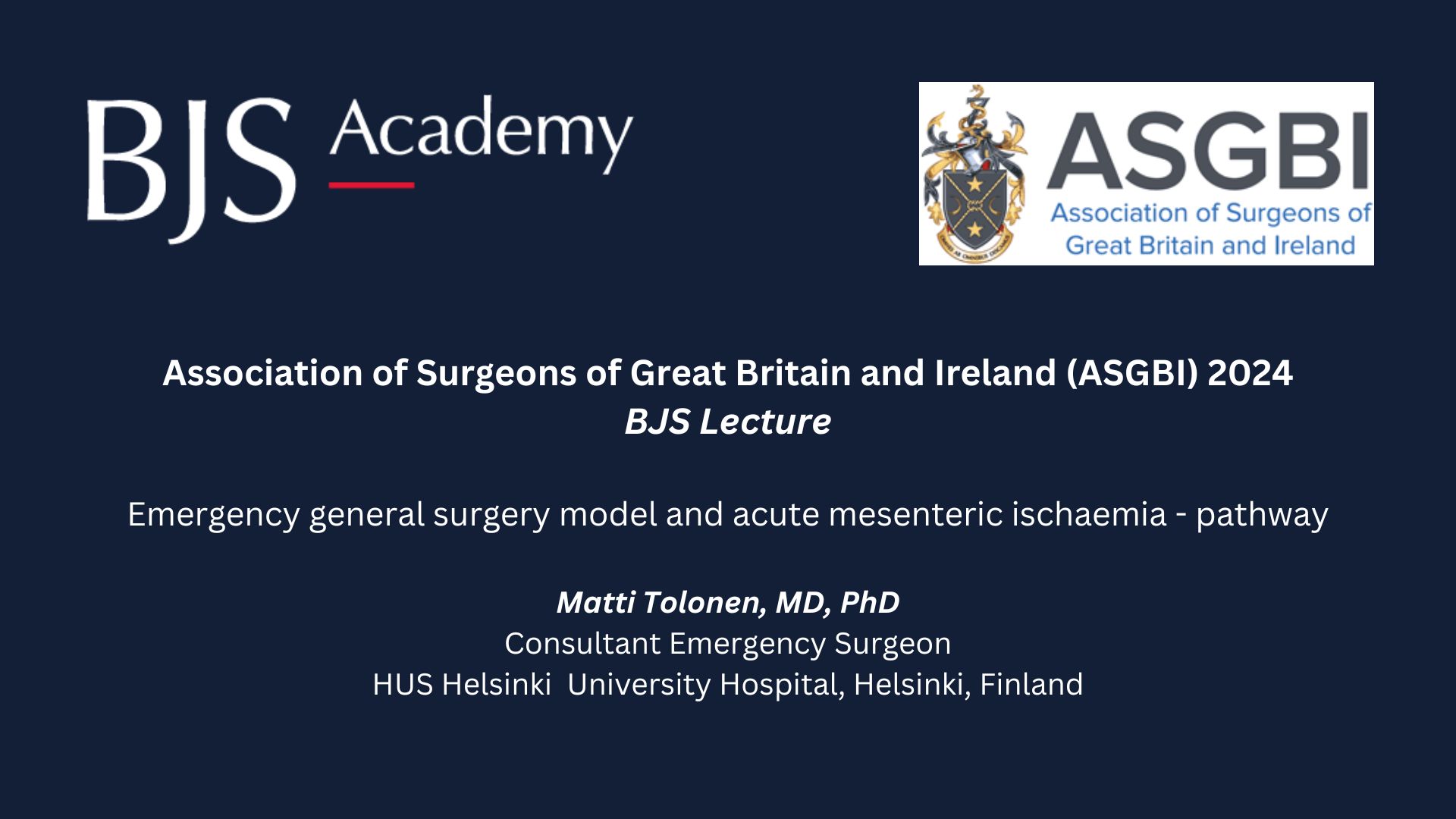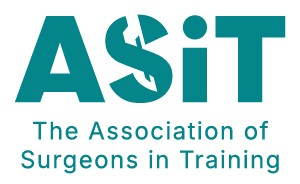BJS Academy>Continuing surgical ...>A contemporary overv...
Surgical digest
A contemporary overview of the management of acute ilio-femoral deep vein thrombosis; why, how and where next?

Sandip Nandhra
Population Health Sciences Institute, Newcastle University, Newcastle Northern Vascular Centre, Freeman Hospital, Newcastle

Emma Wilton
Department of Vascular Surgery, Oxford University Hospitals NHS Foundation Trust, Oxford

Steve Black
Guy’s and St. Thomas’ Hospital, London Kings College, London
Related articles

BASIL-2 results explained
Andrew Bradbury
I have been asked to offer some thoughts on what the BASIL-2 trial may mean following publication of the headline results in the Lancet on 25 April 2023. The journey to BASIL-2 started around 25 years ago when I was a Senior Lecturer in Vascular Surgery at Edinburgh University, Scotland, and was fortunate enough to be awarded an NIHR HTA grant for the first BASIL, now known as the BASIL-1, trial. In the late 1990’s, the idea that one could treat chronic limb-threatening ischaemia (CLTI), in those days called CLI or SIL (critical limb ischaemia or severe ischaemia of the leg), other than by means of bypass using either vein or prosthetic conduit was considered extremely controversial. There were real concerns that the endovascular management of CLTI was being adopted in the absence of good evidence that it was a clinically and cost effective treatment option. And that is why NIHR HTA put out a call for an RCT in this area of practice. We ran BASIL-1, first in Scotland, and then when I moved to Birmingham in 2000, across most of the UK between 1999 and 2004. In BASIL-1, a bypass first and a plain balloon angioplasty first revascularisation strategy resulted in similar amputation free survival out to 2 years. However, in patients who survived for two years, randomisation to bypass first was associated with significant improvement in overall survival and a trend towards improved amputation free survival. About 25% of the bypasses were prosthetic, which reflected practice at that time. Around 75% of the patients in BASIL-1 had a revascularisation that was limited to the femoro-popliteal segment. A post-hoc, sub-group analysis of approximately 100 BASIL-1 patients that had an infra-popliteal, with or without a femoro-popliteal, revascularisation also showed a trend in favour of (vein) bypass surgery.

Chronic limb-threatening ischaemia: current knowledge and future perspectives
Fabio Stocco, Jing Yi Kwan, Marc A. Bailey, Patrick A. Coughlin
The incidence of peripheral arterial disease (PAD) has risen dramatically, and it is estimated to affect around 200 million people worldwide. This rise can be explained by an ageing population, persisting high rates of tobacco smoking and the increasing incidence of diabetes mellitus (DM).1,2 Chronic limb-threatening ischaemia (CLTI) is the most severe manifestation of PAD and is characterized by rest pain and/or tissue loss (e.g. ulceration or gangrene).1 It is estimated that CLTI affects about 10% of all patients with PAD.3 Figure 1. Typical critical ischaemia of the left foot. Patients with CLTI are at high risk of major limb amputation (MLA) and major adverse cardiovascular events (MACE – myocardial infarction and stroke)1 with a significant reduction in life expectancy. Overall mortality rates are similar to that of advanced cancers.3 They also commonly experience poor quality of life.

2024 ASGBI BJS Lecture: Emergency general surgery model and acute mesenteric ischaemia – pathway
Matti Tolonen, MD, PhD, presents his BJS Lecture “Emergency general surgery model and acute mesenteric ischaemia – pathway” from the 2024 Association of Surgeons of Great Britain and Ireland (ASGBI) International Surgical Congress.
Copied!
Connect

Copyright © 2025 River Valley Technologies Limited. All rights reserved.








.jpg)



